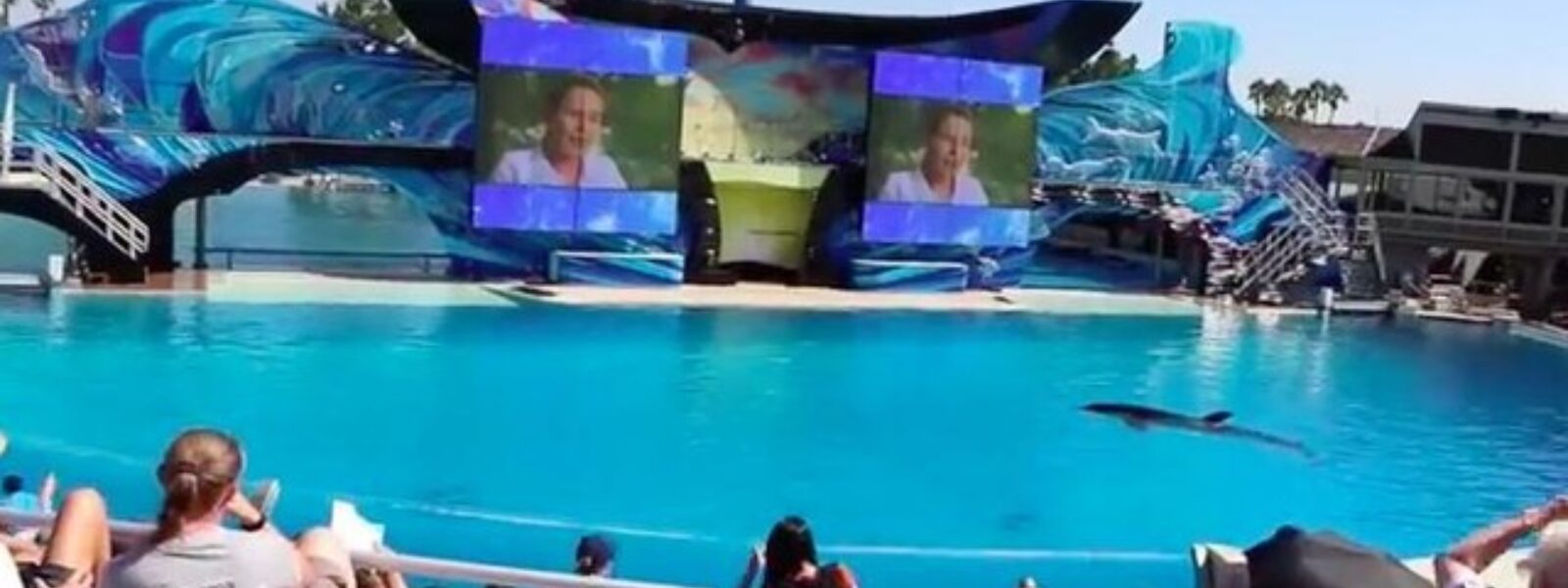

SeaWorld has announced that, beginning next year, they will "transform" their orca shows, claiming that they will become more “natural” than their typical circus-style with loud music shows. The move is part of their efforts to wipe clean their tarnished image and address nose-diving attendance. But the planned “natural” additions could spell increased mental anguish for captive orcas.
Beginning with the San Diego facility, SeaWorld’s plans involve modifying the tanks to include rocks, trees and other symbols of the wild (it is not clear whether the inside of the tanks will change to become any less barren than they currently are). Replacing the gaudy theatrical videos played during performances are what appear to be screens that will depict wild orcas in their natural habitat. According to the science, however, this could take orca psychological torture to a whole new level.
Two separate studies conducted with captive bottlenose dolphins, one in 1989 and one in 1992, concluded that dolphins recognize content on television screens as being representations of reality. During one of the experiments, dolphins were taught to mimic the behaviors of a trainer. They were then shown a video of a trainer throwing a ball through a hoop. After watching the video, the dolphin retrieved the ball in his pool and proceeded to the hoop for his “layup”. As the researcher points out, “the dolphin does not attempt to retrieve the ball shown on the TV screen, instead retrieving the ball in his own tank”. The dolphins were able to recognize their human trainer on the TV, despite the images being greatly decreased in size and quality (particularly TV screens from that era ), and were able to mimic the behavior as they had been trained. In other words, they immediately understood the content of the video and that it represented reality.
“Based on what science has determined about orca neurobiology, psychology, cognition, and behavior, it is obvious that these orcas would have some understanding of what is being shown,” says Dr. Toni Frohoff, Director of Research at Sonar and cetacean scientist for In Defense of Animals.
“What might orcas Tilikum, Katina, Corky, Kasatka and Ulises, all of whom were captured from the wild, think about seeing what could easily be their natural homes, and even their own families - yet not being able to actually communicate with - or experience them? This could be one of the cruelest forms of psychological torment for captive orcas possible.”
Based on how they treat orcas, SeaWorld seems to believe that the whales simply do not understand or think about their environment. But the evidence strongly suggests otherwise. “SeaWorld needs to begin taking cognitive science into account when thinking about what is best for cetaceans,” says Frohoff. “SeaWorld needs to recognize the potential cruelty of these marketing tactics."
This is not to say that we should anticipate any overt reactions from the orcas who will be regularly exposed the screens as they go through their trained routines. Cetaceans appear to have a knack for accepting their situations with relative (and surprising) grace – at least, this is how it appears to us. But, just because orcas cannot express how they feel to SeaWorld trainers in English does not mean that homesickness and suffering are not felt. Stress is a leading cause of health problems in captive cetaceans.
It appears abundantly clear that SeaWorld’s new “natural encounters” are designed to exclusively benefit human customers and SeaWorld executives. If SeaWorld truly wanted what was best for the whales, they would be exploring retirement options to a seaside sanctuary. But they continue to make that clear that intend to make money off of cetaceans for as long as they are able to survive.
IMMP is leading efforts to retire captive orcas and other cetaceans to sea pen sanctuaries that provide an ocean experience while still providing food and vet care to orcas and dolphins. Please consider a donation to help our work.